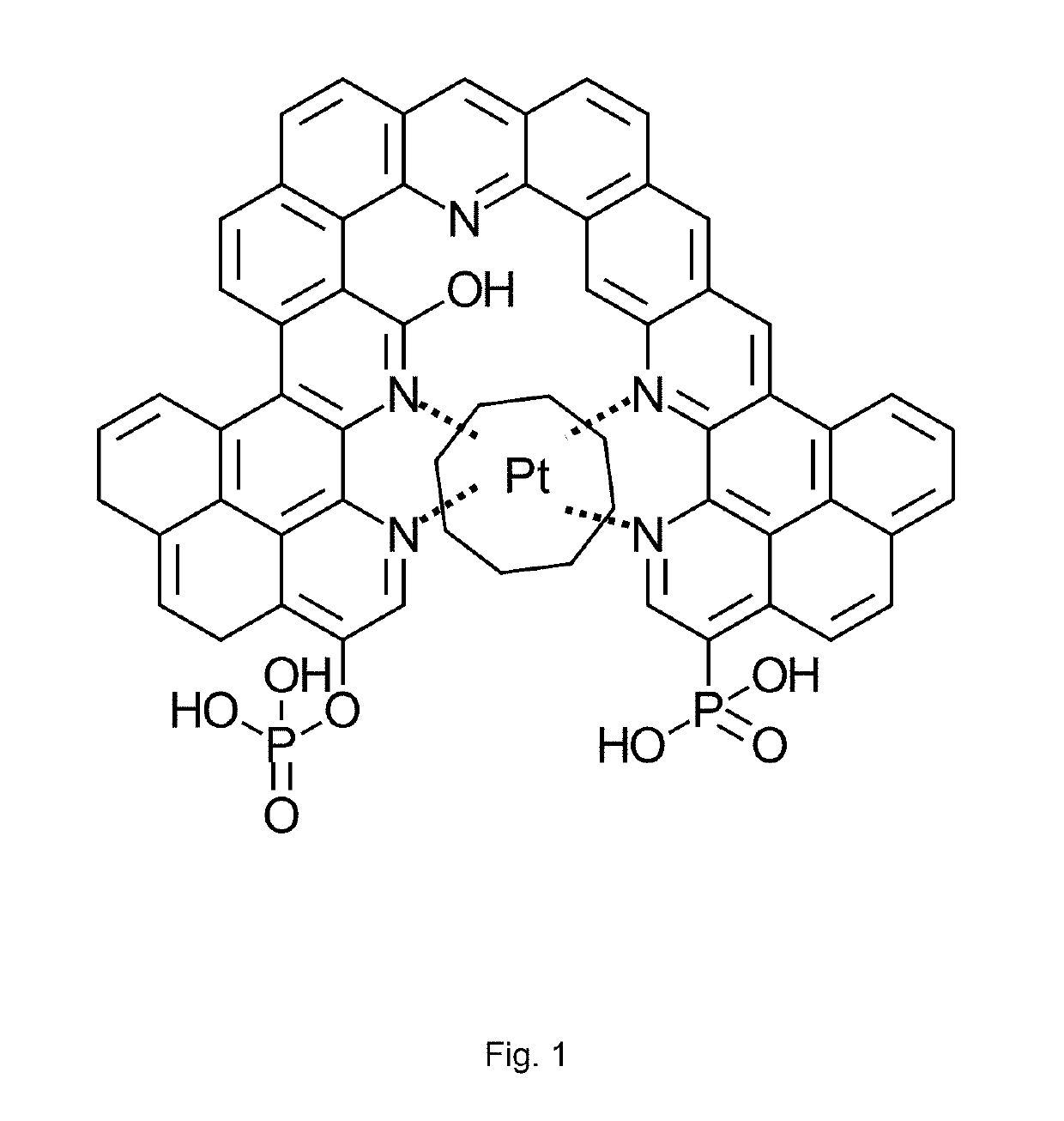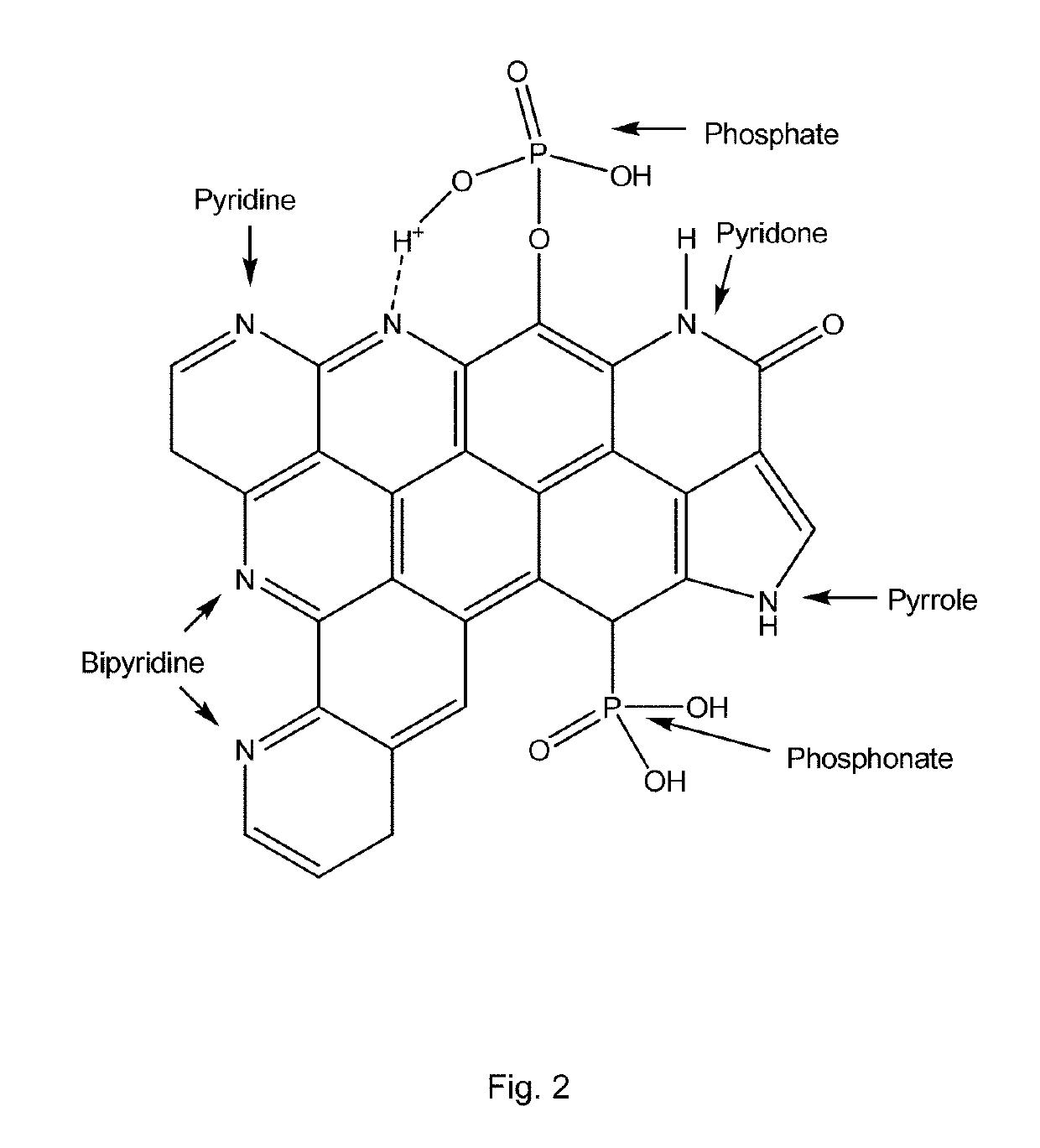Nitrogen and phosphorous doped carbon supported nanoparticle platinum electrocatalyst and method of making
a platinum electrocatalyst and phosphorous-doped technology, which is applied in the field of nitrogen and phosphorous-doped carbon supported nanoparticle platinum electrocatalysts and methods of making, can solve the problems of low performance, contribute to both the cost and durability of pemfc, and limit their adoption, etc., to achieve superior microporous/mesoporous structure, superior durability, and superior catalytic properties
- Summary
- Abstract
- Description
- Claims
- Application Information
AI Technical Summary
Benefits of technology
Problems solved by technology
Method used
Image
Examples
example 1
[0050] preparation of carbon supports. All starting materials were purchased from Aldrich and used as-received. To add nitrogen and phosphorus heteroatoms, ammonium phosphate and phosphoric acid were added to the carbohydrate mixture at specific formulations, henceforth called AC-1 and AC-2. For AC-1, the formulation was 36.7 wt. % cornstarch, 19.4 wt. % ammonium phosphate and 43.9 wt. % phosphoric acid. For AC-2, the formulation was 14.7 wt. % dextrose, 22 wt. % cornstarch, 19.4 wt. % ammonium phosphate and 43.9 wt. % phosphoric acid. These formulations are the composition before carbonization. The carbon supports were prepared by first mixing the ingredients above (for AC-1 or AC-2) neat using an overhead stirrer for five minutes. The slurry was then dried in air at 180° C. for 2 hours. The solids were then crushed, screened through a 4-mesh size sieve, and placed inside a box furnace, carbonized, and then activated under flowing N2 at 550° C. for 4 hours to obtain the critical su...
example 4
[0053] methods for characterizing the platinum-carbon catalysts. Thermogravimetric analysis (TGA) was performed in the temperature range of 25-1080° C. with a scanning rate of 20° C.·min−1 using a thermogravimetric analyzer (TA, TGA-Q5000) under an air flow rate of 25 mL·min−1. XRD patterns of the catalysts were collected using a Scintag XDS2000 θ / 2θ diffractometer with a Cu target X-ray tube (λKα=1.540562 Å) operating at 45 kV and 40 mA. The catalyst samples were ground into powder with a mortar and pestle and packed into a rectangular plastic holder that was 2 mm deep. XRD patterns were collected over the 2θ range from 30° to 90° with a step size of 0.05° and a count time of 5 s. The location, amplitude, area and full-width at half-maximum (FWHM) was determined by fitting each peak with a Pearson function using PeakFit software (Jandel Scientific Software). TEM images were taken using an FEI Talos F200X microscope. The catalyst samples were prepared for TEM by dispersing a small a...
PUM
| Property | Measurement | Unit |
|---|---|---|
| particle diameter | aaaaa | aaaaa |
| pore widths | aaaaa | aaaaa |
| pore widths | aaaaa | aaaaa |
Abstract
Description
Claims
Application Information
 Login to View More
Login to View More - R&D
- Intellectual Property
- Life Sciences
- Materials
- Tech Scout
- Unparalleled Data Quality
- Higher Quality Content
- 60% Fewer Hallucinations
Browse by: Latest US Patents, China's latest patents, Technical Efficacy Thesaurus, Application Domain, Technology Topic, Popular Technical Reports.
© 2025 PatSnap. All rights reserved.Legal|Privacy policy|Modern Slavery Act Transparency Statement|Sitemap|About US| Contact US: help@patsnap.com



